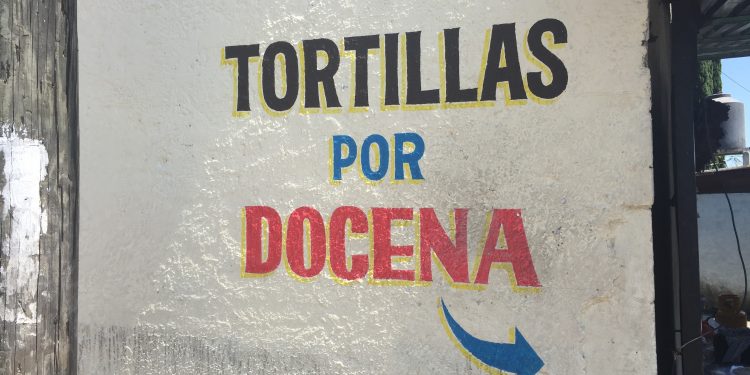Tortillas are mainstay staple of the Mexican diet, along with beans, rice and various vegetables and spices. So important is this foodstuff in Mexico that the price of corn (and thus tortillas) is a political hot-potato. The last significant jump in prices — way back in January of 2007 — led the government to rustle-up a series of short-term and long-term measures in an effort to solve the immediate problem, and avoid it happening again.
In these days of globalization, it’s probably superfluous to explain what tortillas are, although the crossword clue-like “taco shells” falls so far short of doing them justice that some further comment seems justified.
Of the basic white-corn tortillas, there are two main kinds, those made from corn flour and those made from corn dough called nixtamal. Preference is a matter of taste, although traditionalists will tell you that tortillas made with corn flour don’t even come close to those made with nixtamal. But tortillas aren’t the only food made in Mexico with corn. It’s also used to make tamales, sopes, tlacoyos, tostadas, quesadillas and innumerable other culinary delights that are variously mixed with meat, beans, cheese, and any of dozens of salsas.
The sudden shortage of corn in 2007 led the-then Agriculture Minister to note the irony of Mexico, the original corn-growing country and the one with the most varieties (there are thousands) of the grain, not having enough of it. Mexico is proud of its corn heritage, and corn has been at the center of a number of controversies in modern times. The country’s sugar makers have spent the better part of the last decade in dispute with U.S. corn refiners over high fructose corn syrup, and Mexico opposes the use of genetically modified corn, a subject that took on particular importance some years back when scientists reported that genetically modified DNA had been found in wild corn in Mexico.
In Mexico, many people turn their noses up at yellow corn when it comes to making tortillas, or eating corn on the cob (elotes). Yellow corn, they say, is only for animal consumption. Canned sweet yellow corn is available in supermarkets, and presumably people buy and eat it–just not those people.
One thing to be sure of, the best tortillas are found in the provinces. Mexico City may boast the best of many things available in the country, but chilangos can frequently be heard on their return from trips into the country to sing the praises of the tortillas they ate there, almost as if they didn’t exist in the capital.
See also: Markets and Shopping in Mexico
Mexico in your inbox
Our free newsletter about Mexico brings you a monthly round-up of recently published stories and opportunities, as well as gems from our archives.

